We have much more to do and your continued support is needed now more than ever.
The Sagebrush Sea: The Burrowing, Bustling, and Soaring Creatures of the Sage
The sagebrush teems with life burrowed below, roaming across, and soaring above the landscape
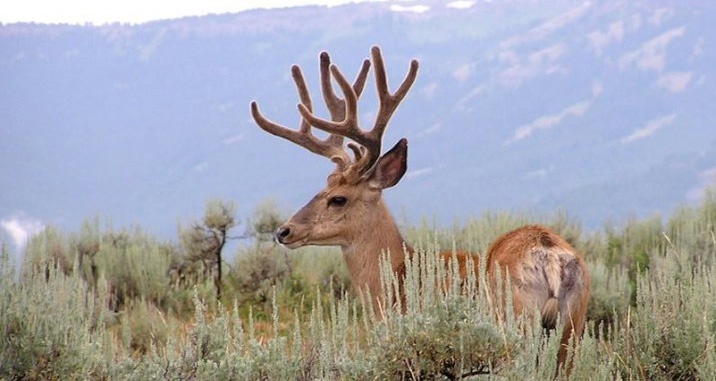
There is a place in the West unlike any place in the world. The horizon stretches west over a rolling sea of sage, and when the wind brushes across the land it’s as though a person is watching the ebb and flow of waves at low tide. From the greater sage-grouse to elk to the golden eagle, a diverse array of wildlife depend on sagebrush country for sustenance, shelter, and survival.
The sagebrush sea once expanded across approximately 153 million acres of the valleys, mountains, and grasslands that comprise the American West. The green sea has since shrank to 106 million acres—yet it is home to an estimated 350 species of plants and animals. Many of these species are under increasing threats from habitat loss and degradation, shrinking resources, external threats, and the consequences of climate change. Just like the complex ecosystems under the ocean, the sagebrush and the mass of creatures that call it home remain a mystery to many.
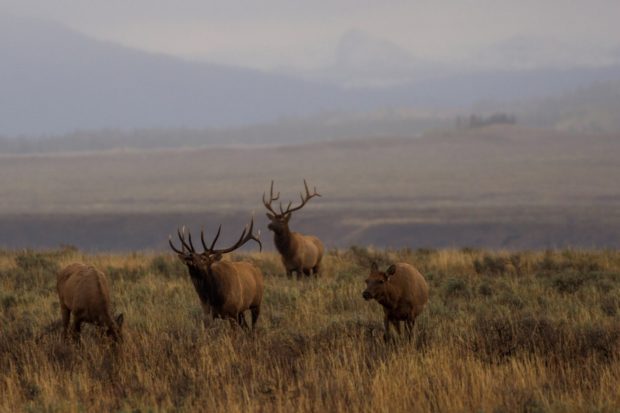
Petite Pygmy Rabbits
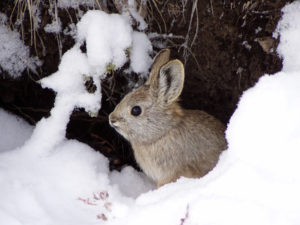
Life thrives under the grounds of the sagebrush lands. The petite pygmy rabbits are one of the two species of rabbits that dig into the earth and create burrows for shelter and warmth. During the winter, the rabbits dig near sagebrush plants more than six feet tall to provide dense coverage and near-instant access to their sustenance (sagebrush constitutes 99 percent of the rabbit’s winter diet). The sagebrush lizard also searches underneath the earth for shelter. They are active during the day and like to lounge on the warm rocks nestled in the sagebrush from mid-May to mid-September. When the weather turns or seasons shift, the gray or light brown lizards move underground.
Golden Eagles
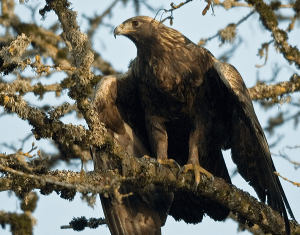
The smaller creatures on the surface of the sea are at the mercy of the winged predators. The golden eagle swoops down into the open sagebrush to catch small mammals like rabbits and squirrels and birds, including sage-grouse. Once locked onto a target, golden eagles can dive down at speeds up to 150 mph. Golden eagles furiously defend their extensive home ranges, particularly during breeding season; the birds’ home ranges can extend over 60 square miles. The flying predators of the sagebrush are familiar friends of sportsmen and women. The large prairie falcon thrives in the open, arid skies above the sagebrush sea. Prairie falcons are skillful hunters that fly fast and close to the ground, which often inspires falconers to recruit the bird. The falcons sport a thin, dark feathers from either their eyes or beak that pops against their grey-brown coat like a mustache.
Elk
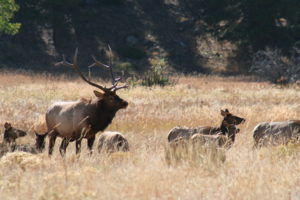
Life also emerges from underground onto the surface of the sagebrush sea. Some of the West’s most iconic creatures roam above ground and across the ocean-like expanse. Elk descend from the woodlands into the sagebrush from winter to late spring for shelter and to calve. Like clownfish families that shelter in sea anemones, young elk utilize the dense plants that surround them for protection from predators. Elk use the dense shrubs as coverage during the first weeks of life while herds of elk eat sagebrush buds to survive the winter. Meanwhile, pronghorn make one of the longest wildlife land migrations in the world. The expansive sagebrush country gives the second-fastest land animal room to run. The pronghorn migration would also not be possible without having sagebrush for food during their journey.
Greater Sage-Grouse
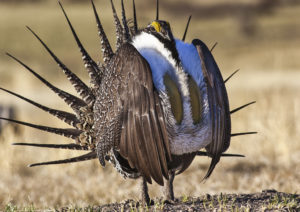
Perhaps the species most associated with sagebrush country is the greater sage-grouse, a chicken-sized bird with a spiked tail and elaborate mating dance that draws bird watchers from across the country. The quirky birds roam the sagebrush to seek shelter from predators and the wild weather of the plains. Sagebrush is the bird’s primary source of food year-round. In the spring, the sage sea becomes a stage for the males to gather on their ancestral mating grounds, called leks, and swell and pop big yellow sacks on their chests to attempt to attract females.
Nestled between the mountains of the West, the sagebrush sea teems with life beneath, on top of, and above the surface. While teeming with life, the sagebrush sea has shrunk because of urbanization, conversion to crops, drought, oil and gas drilling and invasive species. As a result, sage-grouse numbers have plummeted. The loss of habitat is also a threat to mule deer, pronghorns, pygmy rabbits and many other species. Conservation plans, finalized in 2015, grew out of efforts to reverse the losses and were forged over years of collaboration among state and federal agencies, local governments, private landowners, sportsmen and women, ranchers, the oil and gas industry and others. The plans helped convince the U.S. Fish and Wildlife Service that the sage-grouse doesn’t need to be added to the endangered species list at this point. However, these carefully crafted plans with their common sense safeguards are under review by the Department of the Interior and could be altered to the point that sage-grouse, hundreds of other species and the sagebrush sea could be jeopardy.





















